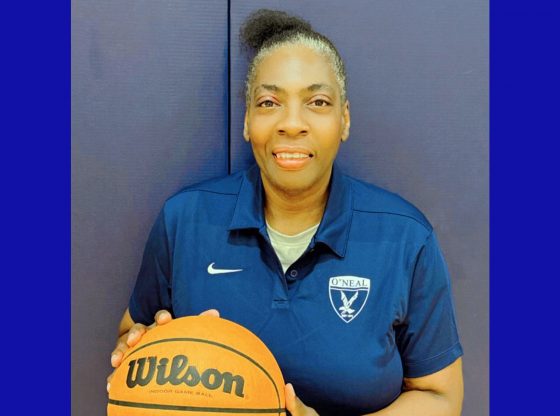Edward Harvie Ward is 22, the son of a pharmacist from nearby Tarboro and enrolled at UNC-Chapel Hill. Not the best student, he is a charismatic fraternity kid, good-looking with a reputation as a ladies’ man. He has already seen his two years in the Army during World War II pass quickly playing golf with the top brass. With no expectations, he entered the 1948 North & South Amateur, a tournament second to only the USGA Amateur in importance.
After Monday qualifying, news reaches tournament officials that Donald Ross has died in his beloved Pinehurst. Thoughts of postponing the event or even canceling are soon set aside and Harvie goes on to burn through the field, winning five matches handily.
In the semifinals, his opponent is a rising star, a sophomore at Wake Forest from Pennsylvania named Arnold Palmer. Harvie dispatched him easily, 5 & 4 to make it to the finals the next day. Arnold would never play particularly well at the North & South, but that never stopped him from loving Pinehurst.
His opponent is the best amateur in the world and 1946 North & South Champion, Frank Stranahan. The year before, Frank had placed second at both the Masters and the British Open. His father is a multimillionaire from Toledo, Ohio having founded the Champion Spark Plug Company. At 25, Frank is the unquestioned favorite.
The 36-hole final match saw 2,500 people line the fairways of Pinehurst No. 2, most of them having made the short trip from Chapel Hill to root for Harvie. By one account, the Tar Heel crowd cheered mightily as if it were a football game, not knowing much about golf etiquette.
Ward would go on to beat Stranahan by 1-stroke after winning the par 3 17th in the morning round, then never losing his lead in the afternoon. News accounts of the day reported Ward had 18 one-puts, incredibly using a “battered old putter” he found in a locker room of his Tarboro, NC club eight years earlier.
With his unexpected win in the 1948 North & South over Frank Stranahan, Harvie Ward would begin his rise to the top of amateur golf.
In the years to follow, Ward will go on to win the NCAA Division I individual title, earn consecutive US Amateur titles, make multiple Walker Cup appearances, win the Canadian Amateur, finish twice as low amateur at The Masters and a win at the British Amateur over none other than his rival, Frank Stranahan.
At the height of his amateur career in 1956, Harvie resisted turning pro, preferring to chase the fame and respect achieved years earlier by the much-admired Bobby Jones. To retain his amateur status with the USGA, Ward accepted an offer from a wealthy car dealer in California, Eddie Lowery. Harvie would stay on the payroll by selling cars, playing customer golf and rising to the top of amateur golf. That arrangement would later cause his life to unravel.
Years before, a young Eddie Lowery would sneak his way onto the grounds of The Country Club in the well-to-do Boston suburb of Brookline and ask Francis Ouimet if he needed a caddie for the 1913 US Open. What followed is the unlikely story of the first American-born player to win the US Open over the two best players in the world at the time, Englishmen Harry Vardon and Ted Ray. The story was made into the book “The Greatest Game Ever Played” and a movie by the same name.
Lowery would make his way to California and ride the wave of popularity of the automobile during the postwar booming economy. Still interested in amateur golf, Lowery took to sponsoring players like Ward, until a tax audit opened his financial records and sparked an investigation by the USGA.
On top of the amateur game, Ward was found to have violated the Rules of Amateur Status for accepting travel expenses from Lowery. The decision was announced by Richard Tufts, son of Pinehurst’s founder, USGA president and longtime proponent of amateur golf. His two US Amateur Championships vacated, Ward’s life would enter a tailspin as he stubbornly refused to turn professional. Some say he would have been likely considered a rival to Jack Nicklaus and Arnold Palmer.
For the next 20 years, Ward hardly played golf at all. Moving from job to job, and a string of failed marriages.
Things began to change when he moved back to North Carolina in 1977, where his fame began, to work at the newly opened Foxfire Resort then at the Pine Needles Lodge and Country Club. Teaching lessons on the range gave him a reason to get back into the game. After his friend Jack Nicklaus offered him a position in Orlando at Grand Cypress Club, Ward took it and spent 10 years in Florida, before retiring to Pinehurst in the late 1980s.
It was during this time in Florida as a teaching professional that Ward made friends with a young Payne Stewart. “He had a swing like a Rolls-Royce,” Ward would say. Perhaps Ward’s biggest impact on Steward would come by introducing him to UNC sports psychologist Dick Coop. The same Dick Coop that was Payne’s mental coach when he won the 1999 US Open in Pinehurst.
Harvie Ward died in 2004 in Pinehurst. One of golf’s most accomplished amateur golfers, the kid from Tarboro, North Carolina was written about as “The most talented amateur of the decade, no question about it, was Harvie Ward, the consummate stylist from North Carolina,” by golf historian Herbert Warren Wind.
Feature photo courtesy of the Tufts Archive: Arnold Palmer (L) and Harvie Ward before their semifinal round of the 1948 North & South Amateur in Pinehurst.
 ~Written by Sandhills Sentinel Reporter John Patota.
~Written by Sandhills Sentinel Reporter John Patota.



















